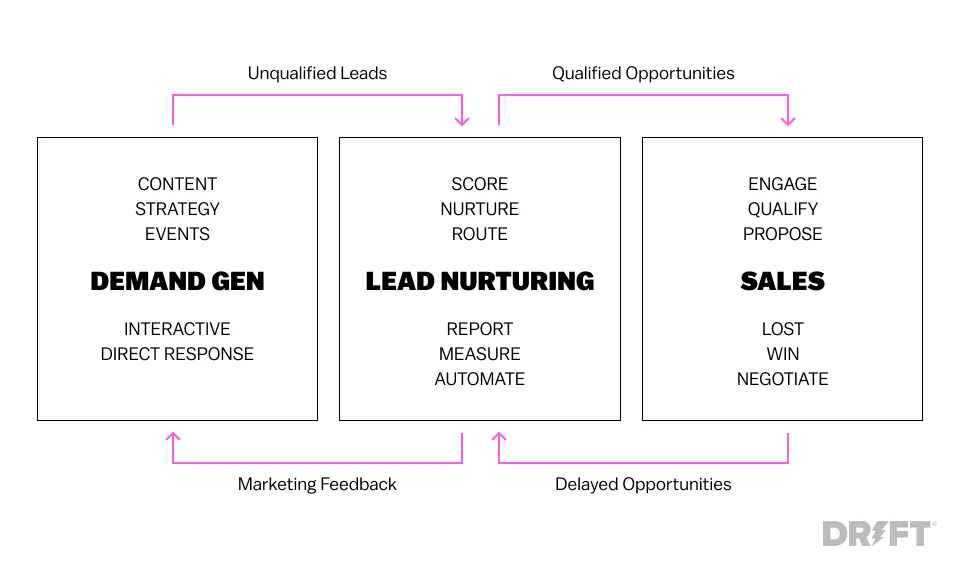Building great products or offering amazing services is not enough to run a successful business.
You need to inform your prospective customers about your products and services and create a demand for them to drive revenue and business growth. That’s where a demand generation campaign comes into the picture.
Don’t know what demand generation is and how to use it for growing your business?
Read this ultimate guide to demand generation to learn everything you need to know.
What is Demand Generation?
Demand generation is a targeted marketing tactic aimed at driving awareness about a brand and creating interest in its products or services.
It focuses on targeting new audiences and informing them about your brand and offerings using high-quality educational content and marketing tactics.
Here’s an image that shows where demand generation fits within the marketing framework:
Why Should You Invest in Demand Generation?
The main purpose of demand generation is to stir interest in a brand and its offerings. This results in finding prospects that are easier to move down the sales funnel for further nurturing.
Without demand generation, you won’t have enough leads in your funnel to drive business growth.
A well-executed demand generation campaign can help you:
- Reach new audiences and spread brand awareness.
- Drive more traffic to your website.
- Create buzz around new product launches.
- Improve the quality of your sales leads.
- Increase conversion rate.
The Step-by-Step Demand Generation Process
To run a successful demand generation campaign, you must first understand the demand generation process.
Here is a step-by-step guide on the same:
1. Define your demand generation goals
Though the broader goal for demand generation campaigns is spreading brand awareness and stimulating interest, you need to be more specific. Clearly define and set specific, measurable, attainable, relevant, and time-bound (SMART) goals.
- Do you want to promote a new product?
- Is your goal to drive more monthly traffic to your website?
- Have you launched a new brand and simply want to create buzz?
Whatever it is, be specific and set KPIs to measure your performance on your goals. Use this SMART goals format to set your goals.
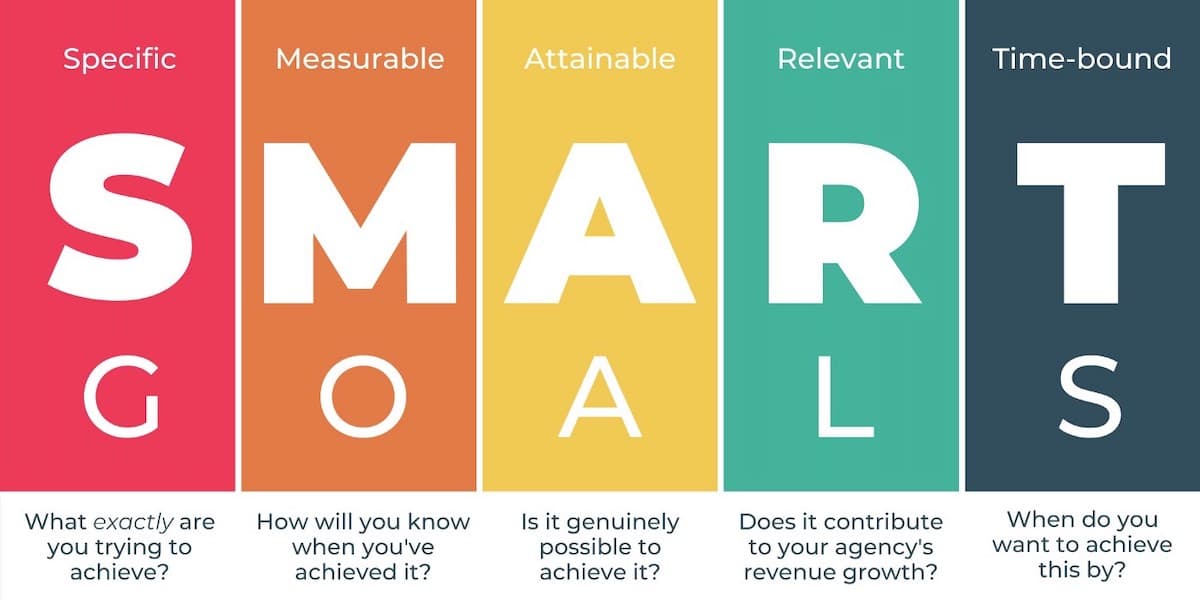
2. Understanding your buyer’s journey
Understanding how consumers interact with your brand and the stages they go through before buying your products helps create more targeted campaigns.
A buyer’s journey can be broadly categorized under three stages:
- Awareness: This is the stage where a consumer learns about a brand and what it offers. Demand generation is a tactic that is used at this stage of a buyer’s journey.
- Consideration: At this stage, consumers develop an interest in a product and consider various brands to see which one provides the best offer and features.
- Decision: This is the stage where a consumer chooses a brand and buys something.
Here’s an example that shows a visualization of a buyer’s journey who’s looking for an SEO tool. You can create something similar for your business.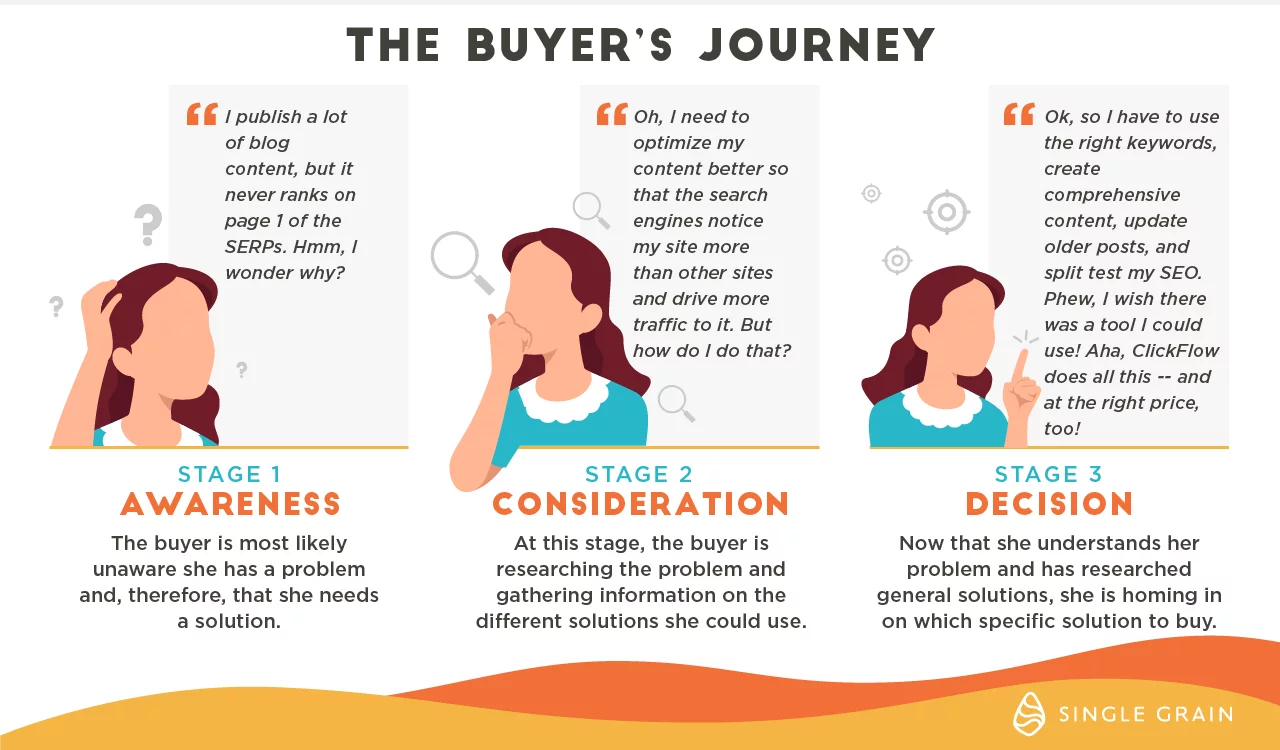
3. Understand your target audience
Before you create your demand generation strategy, you must conduct research to understand your target audience.
Start by defining your target customer segments using demographics. Then, add to that by using behavioral characteristics like their needs, preferences, and pain points.
Use social media analytics, website analytics, and competitor analysis to acquire customer data and create detailed customer personas.
Here are some things you can include in your customer personas.
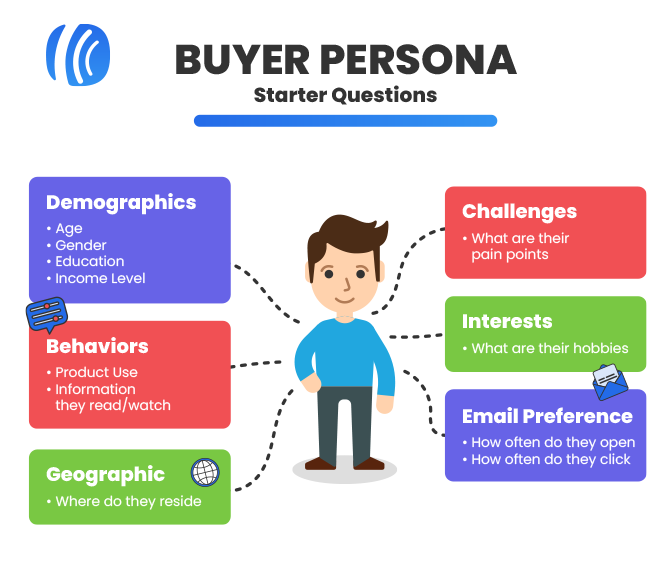
4. Create a demand generation strategy
Making a winning strategy should be easier when you have clear goals and a well-defined target audience in mind.
Creating a demand generation strategy involves the following steps:
- Set a budget for your demand generation activities.
- Select the channels you’ll use to reach out to your target audience.
- List the various tactics you’ll use in your marketing mix.
- Choose the types of content you plan to use for your campaign.
5. Leverage a mix of different demand generation tactics
A successful campaign requires a mix of various demand generation strategies. You can’t rely on just 1-2 tactics to achieve your goals.
Here are some popular marketing tactics that you can consider:
- Content marketing: To inform and educate your audience about your products and services, and the benefits they offer
- Social media marketing: To reach new audiences and engage with them on channels where they’re most active and likely to pay attention
- Email marketing: To promote new products to existing customers or re-engage prospects to drive them down the sales funnel
- Search engine optimization (SEO): To drive organic traffic to your website by using relevant keywords in your content
- Paid advertising: To reach audiences you wouldn’t have reached organically and to guide them to the next step
- Event marketing: To create a buzz around a new product, store, or collection
- Influencer marketing: To reach specific target audiences who are likely to be interested in your products, especially if their favorite influencer recommends them
Check out this image for some more inspiration on the kind of strategies you can use for demand generation.

6. Measure and optimize your demand generation efforts
The process doesn’t end with you launching your campaign. You also need to track and measure your campaign’s performance.
Here’s how the process works.
Set KPIs for demand generation
To judge whether your campaign is successful in achieving the set goals, you need to set clear KPIs that you can easily track. Here are some important demand generation success metrics that you can track:
- Cost Per Acquisition (CPA): It measures the cost of acquiring one customer from a particular channel or campaign.
- Customer Lifetime Value (CLV): This is an estimate of how much a business earns from a single customer over the course of the entire relationship.
- Conversion rate: This gives an idea of how many prospects moved to the next stage compared to how many people were reached by a specific demand generation funnel.
- Increase in website traffic: This measures the increase in web traffic as a result of your demand generation campaign.
- Length of your sales cycle: This refers to the time it takes from you reaching your prospect to the time when they make their first purchase. If your sales cycle length reduces as a result of your campaign, you can call it a success.
Analyze the results
If you use a good analytics tool, you’ll be able to track all the important metrics. Next, you need to analyze these metrics and assess what worked well and what didn’t.
For instance, you may find that certain channels or types of content performed better than others. Or, a particular marketing tactic didn’t deliver good results but costed a lot. Analyze the data to get these insights.
According to Gartner, there are three steps involved in assessing the performance of a demand generation campaign.
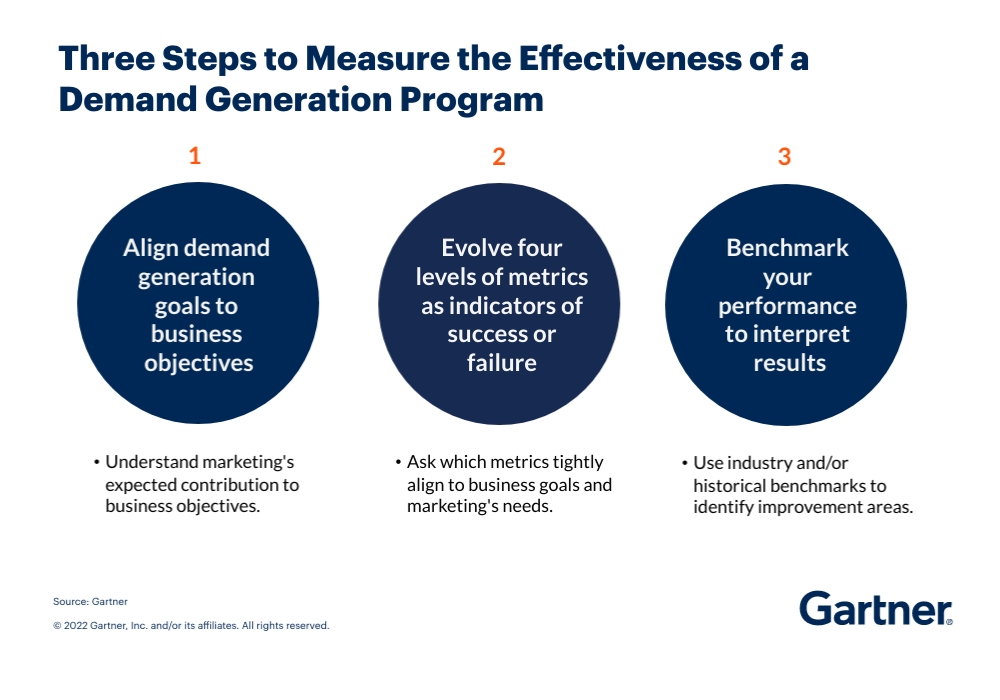
Optimize your demand generation strategy
Once you have gathered all the important insights, it’s time to use those to optimize your demand generation strategy. Invest more in things that are working and discontinue those that aren’t.
Restructure your content and marketing mix as often as needed, to continually keep improving your strategy.
You need to learn how to measure demand generation ROI and improve it if you want executive buy-in and want to increase your marketing budget for future campaigns.
And this step prepares you for that by giving you all the metrics you need to prove the merits of demand generation.
The Best Practices for Demand Generation
There’s no guarantee that your demand generation efforts will pay off, but there are some things you can do to improve your chances of success.
Follow these best practices to plan and run successful demand generation campaigns.
1. Personalize your approach
If you want your marketing messages to stand out in an oversaturated marketing landscape, you need to use personalization.
Consumers expect marketing communications to be crafted keeping their needs and preferences in mind.
In fact, according to a Salesforce survey, 73% of consumers expect companies to understand their needs and expect personalization.
Demand generation requires reaching new audiences who may not have an existing relationship with your brand. If you can offer personalized ads and relevant content at this stage, they’re bound to stop and notice.
2. Create a strong offer
The key to the success of any demand generation campaign is offering something relevant and valuable to your target audience.
This could be anything from a freebie to a valuable piece of content. The important thing is to tailor your offer according to your target audience’s preferences and your campaign goals.
For example, if you simply want to promote your new beauty product for women, you can simply offer free samples.
Similarly, if you are targeting B2B clients, offering informative content like an ebook or whitepaper—related to a key industry topic—will work better.
Here’s an example of a valuable offer by Kinsta:
Source
3. Build a lead magnet
One of the best B2B demand generation strategies is using lead magnets.
What’s that?
A lead magnet is a marketing tactic that involves giving a free resource or offer to prospects, in exchange for their contact information. You can offer anything from a discount code to valuable content like ebooks, whitepapers, or online courses.
Here are some of the popular lead magnets that marketers use for greater conversions:

When creating a lead magnet, keep the following things in mind:
- Offer something that’s valuable to your target audience and relevant to your business.
- Keep the form short and include only relevant fields, such as name and email address.
4. Utilize A/B testing
You will need several forms and landing pages for your demand generation campaign. To ensure that you get the best possible conversion rate, leverage A/B testing.
This involves creating two variations of a landing page or form, by changing one elements. You can, for example, create two almost identical landing pages but with different CTAs to see which one performs better.

Similarly, you can change other elements like title, copy, colors, font, etc.
It is a good practice to test only one element at a time to get clear results.
Run several A/B tests to find the top-performing combination for your landing pages and boost conversions.
5. Continuously refine your demand gen strategy
Demand generation is an ongoing process and not a one-time thing. That’s why you should regularly analyze your campaign performance and use the insights to optimize your strategy.
You can choose how frequently you want to conduct an audit and modify your strategy. Remember, that demand generation strategies don’t always deliver quick results, so give them enough time before you analyze your campaign’s performance.
3-6 months should be a good time for performance assessment.
The Demand Generation Tools You Need
To ensure your demand generation efforts are successful, you need to invest in the right tools that can enhance your campaign’s performance.
You’ll need a mix of different types of tools for various purposes. Here’s a definitive guide on the various tools you’ll need and a few recommendations:
- Marketing automation tools: HubSpot Marketing Hub and Klaviyo
- Email marketing tools: Mailchimp and Moosend
- Landing Page Builders: Leadpages and Unbounce
- Paid advertising platforms: Google Ads and Meta Ads
- Social media management tools: Buffer and Sprout Social
- Lead generation software: LinkedIn Sales Navigator and Pipedrive
- Analytics and reporting tools: Google Analytics and Semrush
Ready to Grow Your Business with Qualified Leads?
Demand generation is a core marketing activity for any business as it helps stimulate interest in a brand and its products or services.
You need a winning strategy and the tools and resources to execute it to perfection to generate great results. That’s where we can help.
Leverage our trusted demand generation services to put your brand on the map and get prospective consumers interested in what you have to offer. Contact our team to get a consultation.


